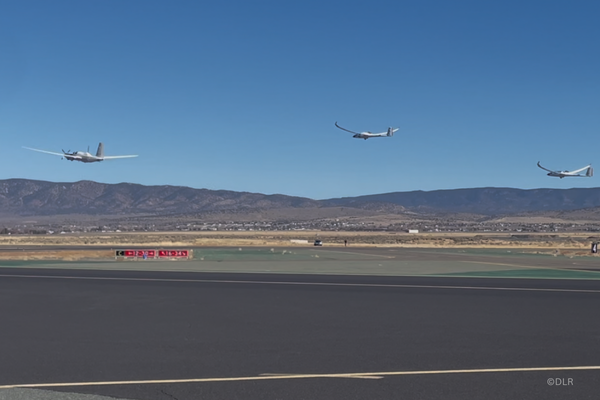As part of the Blue Condor project, the German Aerospace Center (DLR) has, for the first time worldwide, measured contrail formation from a hydrogen-powered aircraft during flight at high altitude. A specially modified glider equipped with a hydrogen engine was towed to an altitude of over nine kilometers and released to operate independently. A research aircraft accompanied the flight to analyze both the resulting contrails and surrounding atmospheric conditions in detail.
This research marks a significant milestone. Contrails form in the upper troposphere when hot exhaust gases encounter cold and humid air – and they are a major contributor to aviation’s climate impact. Hydrogen propulsion is considered a promising solution to reduce both CO₂ emissions and the climate effects of contrails. However, until now, no in-flight measurements existed to assess the formation, characteristics, and climate relevance of contrails from direct hydrogen combustion.
With these new measurements, DLR is providing the first robust data on the composition and behavior of hydrogen-based contrails. The findings represent a critical step toward developing climate-friendly propulsion technologies for the future of aviation.
Read the full article here.
(Image Source: DLR)


